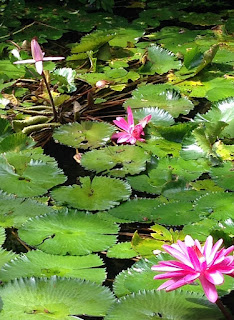Foodtopia Dreaming Episode 12 Contributing to a friends compost
Manu takes me to his house. A small rural block on the edge of town. An oasis really. Brown paddocks all around and green starting from the fence line told you that was his border. No town water, just his roofs. He thinks he doesn’t need much water.
We ride down his driveway of fruit and nut trees, naming them as we go. Five avocados, feijoas, guavas, loquats down one side and citrus down the other. Cumquats, mandarins- and early and a late, a tangelo, grapefruit, limes, and oranges - is that a blood orange too? Stepping back a row sees the covered soft fruit orchard, apricots, peaches, and plums. Not to mention the olive grove in the distance. All healthy and picture-perfect - no disease insight. Grasses of all types just going brown and knee-deep.
In the west I see a couple of pines - no Manu corrects me - Bunya pines - the reason he bought the property - they shade the house from the setting southwesterly sun in summer.
“Remember Eric” says Manu - “This farm is all organic. Fueled by compost”.
Just off the verandah. Typlical of old farm houses.
Off I head and open the door to the loo. Something is wrong. No cistern. No pipes. Just a wooden box with a toilet seat and a bucket of half composted sawdust next to it. I read the instructions. Oh it’s Manu, so this is a composting loo.
My motions are done and I sprinkle a cup of moist sawdust over my contribution. All smells disappear. His instructions were right, the biofilter really does remove any unpleasant aromas - just like a forest cleans our air. I head back, happy to have participated in another composting project.
“Why the composting loo Manu?” I inquire.
“It was my dream to one day sit on a throne in my own backyard. Fermenting intrigues me, food is a passion and gardening a workout. So why not close the loop. Create the cycle. Did I mention cycling is a passion too?” he says.
He goes on “I knew people were composting and recycling their poo - Shit, Faeces, human waste whatever you want to call it. I wanted to know more but people wouldn’t talk about the details. And I’m a details person”
He told me about the snippets of information from people here and there. Which books he read and people who were practicing composters. The systems he saw, piles he smelt, and even felt their fine hummus after a year of composting. And yes, he ate food grown from composted poo.
“But poo! How does that really work?” I ask. Manu patiently explains there is a 12-page ebook that gave the basics but not the confidence to give it a go on a rural block. To replace the septic tank system that requires too much maintenance and water. Water that could be used to grow food. Next he ordered “The Humanure Handbook”.
This conversation was getting deep in it.
Manu continues “Receiving a book in the mail about poo was exciting. For nearly 55 years I have just dumped and ran –or dumped and flushed. I could do some calculations on the amount of water I have used to flush away my humanure but it would be too scary and pointless.”
He tells me it was a fair slog to start with. All he wanted was the low down on how to construct and manage a humanure system right now. That wasn’t forthcoming. You had to put the pieces together yourself. To understand how the humanure cycle works, options for cover material, how to build and maintain your compost piles, and most importantly to gain the confidence to manage it yourself. And to know what to do if things go wrong.
Part of the reason for the patience was the fact that his family grow up on rural properties and had seen how septic systems actually worked – or didn’t and that humanure composting is actually a better way of turning waste into a productive resource.
“Getting to understand the microbes and bacteria, the flow of the humanure system was up to the person who would manage it. It was up to me. I learned to watch the compost cooking (it needs to get above 45 degrees to kill any pathogens) and learn the patience to wait a year until my compost is cured. Time and temperature, water, oxygen, carbon and nitrogen, and a few trillion microbes. So, Eric, you saw those fruit trees on the way in?”
“ Yes” I say.
“They were fertilized with humanure compost.”
I knew that the blood plums I had tasted earlier in the year were out of this world and the figs, the best ever - ripe, flavourful, and oozing a honey-like syrup. These were not the product of commercial fertilizers. Nothing chemical could produce those flavors.
Manu finishes with the philosophy of a French existentialist. “Our existence becomes our essence. Humanure and a composting toilet is an intellectual challenge for a civilized man. It does take a bright spark to be able to learn what you can, give it a go, and respond to your environment to be able to close the nutrient loop in your domestic environment. To trust that you can create the right environment in your compost to grow the bacteria and microbes that will turn your humanure into hummus and apply it to your garden to grow your own food safely.”




Comments
Post a Comment